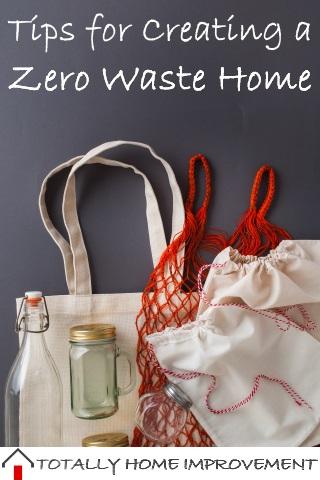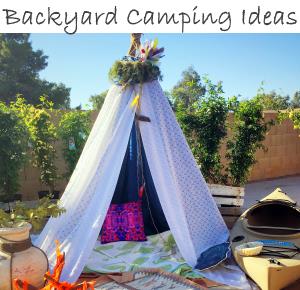
Life without a bin. Now there’s a scary thought. Despite general increased consumerism and buying, however, zero-waste living is more common than ever. Naturally, quitting trash cold-turkey is no easy feat, so it’s best to ease yourself (and your home) into it gradually.
Nonetheless, by taking a few minor steps, you should be able to work your way up to less waste rather effortlessly. If you’re wondering why a zero-waste home is a good idea to begin with, there are plenty of reasons:
• It’s good for the environment (obviously)
• Recycling creates 10x more jobs than disposal
• Leads to more conscientious buying and eating
• Supports local business, which use more waste-friendly packaging
There are a few small changes we can make around our homes that will encourage us to lower (and hopefully eliminate) our waste.
#1) Come On, Compost!
While composting has been around for a while, the trend is just barely picking up. Composters are airtight containers that decompose organic matter (such as food scraps). This decomposed material can later be used for gardening. It serves as a soil conditioner, fertilizer, and a natural pesticide.
This means that compost will rid you of exposure to toxic chemicals found in store-bought pesticides and fertilizers, while also reducing your waste.
Composters go for anywhere from $80-$300, depending on size and capability. If you’re on a budget, buy a smaller composter to place in your yard somewhere easily accessible and resistant to moisture. In other words, avoid placing it on a deck or wooden surface.
#2) Mason Jar Mania
Packaging is a major part of waste, and one of the first steps toward reducing waste is investing in reusable packaging and containers. The best, and most aesthetically pleasing, way of doing this is with mason jars.
Durable, washable, and uniquely stylish, mason jars are a great way to store fruits, veggies, sugar, and more. Of course, it will require you to buy your products in bulk. However, it will likely also encourage you to eat fresher, healthier foods.
Beautifully labeled and arranged mason jars can also be an excellent decorative touch to an otherwise plain kitchen or pantry. While carrying your jars to the local delicatessen might be a bit of a feat, it will definitely be worth it.
#3) Better Your Bedding
Zero waste can be implemented in the bedroom also, although this area can be frequently overlooked in the effort. The synthetic fibers that make up our duvets, sheets, and pillowcases are difficult, if not impossible, to be broken down.
For this reason, real linen, cotton, wool, or hemp bedding is the way to go. Not only are these fibers waste-free, but they’re extremely comfortable. Linen and cotton bedding is breathable and soft, while wool bedding is excellent for colder climates.
Furthermore, linen bedding sustains a very elegant appearance. It can be hand-dyed to all kinds of beautiful colors, allowing you to make zero-waste living an aesthetic choice as well.
#4) Take Advantage of Tech
As with everything, technology plans to make our lives easier in this department. Aside from plastic, one of the products we perhaps waste the most is paper. We read, print, write, doodle. Vow to make your home office a waste-free zone by changing to all-tech.
If you’re the kind of person that likes to hand write, no problem! New tablets come with advanced electronic pens (much more efficient than a traditional stylus) that make it easy. You’ll be impressed how much cleaner and sleeker your home office space will begin to look when there isn’t paper scattered about.
Tech can be implemented in other parts of the home too. Consider bringing tablets into the kitchen to pull up recipes on as opposed to traditional cookbooks or print-out recipes from the internet.
#5) Bidets in the Bathroom
After the kitchen, the bathroom is perhaps our most wasteful room. Between toilet paper and hygiene products packaged in plastic, it’s no surprise. Opting for 100% organic, recycled, and unbleached toilet paper is one option. However, another option is to lower your usage.
The best way to do this is by installing a bidet in your home. If you don’t have the budget or the space to install a separate one, even bidet toilet seats are available as a DIY addition to your existing toilet.
While the bidet is a popular and permanent fixture in most homes across the world, it’s still making its way into the North American market. If bidets became a fixture in more American homes, however, they could save some 15 million trees – the equivalent to 36.5 billion toilet paper rolls.
Last Thoughts
Converting your home to a zero-waste zone is a process that could take months, or even years. Likely, you’ll start off just being low-waste, but even that will make a significant impact. By making minor adjustments/upgrades to your home, whether it be incorporating a composter or installing a bidet toilet seat, you’ll probably see yourself saving money and trips to the garbage bin.
Despite the many environmental benefits of a zero-waste home, the biggest is the opportunity for critical thinking and self-reflection. Increasing your sense of civic responsibility will increase your confidence and your ability to make a positive impression on others. Furthermore, it will likely lead to a better and healthier lifestyle for yourself and your family.
You might also like to read:
• How Can Renewable Energy Sources Be Incorporated In Your Home?
• 5 Eco-Friendly Fencing Options for Your Home
Category:



